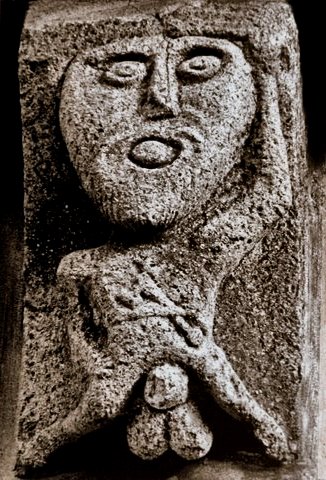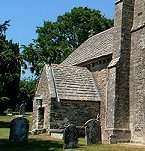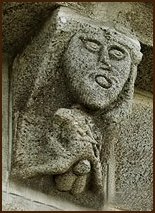
the infernal consequences of illicit sex
SATAN IN THE GROIN
exhibitionist
carvings
on
mediæval churches
Anthony Weir
female
genital exhibitionists:
the
sheela-na-gig conundrum
HIGH-RESOLUTION PHOTOGRAPHS OF MALE AND FEMALE EXHIBITIONISTS
beard-pullers
in the silent orgy
ireland
& the phallic continuum
field
guide
to megalithic ireland
the
earth-mother's
lamentation
beasts and monsters of the mediæval bestiaries
LICENCES
ET OBSCENÆ
DANS LES EGLISES ROMANES BRETONNES
|
Male Figures: part I
Interior corbel, church
of Sainte-Radegonde, Poitiers (Vienne), France
The male erection was both the symptom and the innate disease caused by the insuperable power of Satan which was displayed by the involuntariness of penile erection. This involition was most dramatically demonstrated by the erection of the Hanged Man. The most notorious hanged man was Judas, the betrayer for money, the victim of Satan through greed for money, and the unredeemable suicide. Judas thus embodied the three most terrible sins of Christian Europe: avaritia, concupiscentia and suicide. The sins of sexual desire were listed by St Paul in his Epistle to the Galatians, chapter five. These are somewhat vaguely and prudishly described in terms such as Lusts of the Flesh, Uncleanness, and so on, thus giving plenty of opportunity to those inclined to condemn any sexual act not in the 'missionary position' and not for the purpose of procreation. (The latter has recently been evoked as an argument against same-sex marriage.) Many male exhibitionists on Romanesque churches have scrotal sacs disproportionally larger even than their disproportionate penises. The modern French for scrotum is bourse, the word also for money-bag or purse. (Spanish bolsa, Italian borsa.) Purses were made from the scrota of boars, bulls, rams and goats. Thus the 'licentious' motif of the male exhibitionist incorporated, through the medium of the pun which has been largely ignored by commentators on Romanesque art, the motif of the Moneybags, and the usurer. The product of the diabolical power of the penis was semen, a pollution which ensured that every human born was contaminated by evil. Augustine thus - contrary to scripture - asserted that, despite the possibility of our 'redemption through Jesus', men and Man had no Divine gift of Freedom of the will. Augustine's horror of the erection - at odds with almost every culture on the planet, and even with the declarations of the contemporaneous Council of Elvira - dominated European thought and society from the fifth century to the twenty-first. |
"He had
read somewhere that Love had been invented in the eleventh century by
the troubadours.
Why had they not left us with lust ?"
- Graham Greene,
The Heart of the Matter.
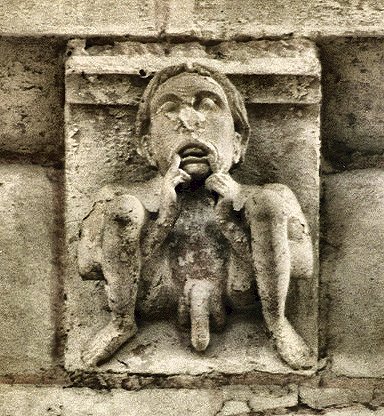
Interior corbel, Poitiers Cathedral, France
Skilled sculptors and masons could move from a contract on the shores of the Mediterranean to another on the shores of the Baltic within a fortnight, bringing new motifs and improved techniques with them. Communications, obviously, were much better than in later times. Many Roman roads were still viable. In recent times, French masons and sculptors all came from the Limousin (modern Creuse). The main school of sculpture in France was evidently farther West in Romanesque times, in the Atlantic lowlands where some very fine and durable limestones could be quarried, and where the greatest concentration of Romanesque churches is to be found. This explosion of energy reflected, and further contributed to, an economic boom that led to the rise of cities, the export of money and criminals on Crusade, and the decline of the monasteries which had generated wealth by their greatly-increased land-cultivation and output. The history of Christianity- a religion of cheap miracles and false humility - is a history of infamy. The Romanesque period (from the 10th to the end of the 12th centuries) was that of the first three Crusades and the ongoing 'reconquest' of tolerant, cosmopolitan and enlightened Spain: horrible hate-filled campaigns of terror - for 'Christianity' is ironically and essentially a religion of hate, especially (and consistently since the 11th century) against Muslims. Many of these churches presented to illiterate parishioners 'sermons in stone' through carved glimpses of Heaven and Hell on their doorways (or painted as murals on walls), and images of sin (and, occasionally, virtue) on the stone corbel-tables (like the one below) which supported their rooves. They resemble the emblem-books distributed in later centuries by the Jesuits, with their moral tales of storks and pelicans drawn from the bestiaries. Saint-Contest (Calvados), France
Tuscania (Viterbo), Italy |
|
Most of these figures are on corbels, which often served as exempla or pedagogical encouragement towards Christian Behaviour. The theologian Jacques de Vitry at the end of the 12th century urged ecclesiastics to direct their talents towards the edification of the unlettered, the instruction of the ignorant and "superstitious" peasants, before whom real-life subjects and scenes should be presented more often, since common people are moved more by images than by sermons - as television has confirmed if it were ever doubted. Some collegiate churches attached to important monasteries featured hundreds of figures illustrating and warning against all sorts of sin from gluttony and drunkenness, dancing and lewd behaviour to calumny, simony and sodomy - and most particularly wealth and the sins of luxury to which wealth inevitably leads.
Male exhibitionist with moneybag, Domfront (Orne) France
Male exhibitionist with barrel-like dolio, Givrezac (Charente-Maritime), France Acrobats and musicians are frequent, for to Christian - as to some Muslim - clerics of the time, all secular music was (like the blues in twentieth-century United States) 'the devil's tunes', and the ubiquitous bagpipe was an obvious - if later - metaphor for male genitals, as, to a lesser extent was the flute. At Givrezac (above) a megaphallic male blows on a dolio, which might have sounded something like a jug played in an Alabama jazz-band of the 1920s. At St. James', Louth (Lincolnshire) a male exhibitionist plays a fife and drum.
Corullón (León), Spain
Plaisance-sur-Gartempe (Vienne) Ithyphallic bear on the church tower at Aston Somerville (Gloucestershire)
Window-voussoir, Annaghdown (Galway), Ireland
Mauriac (Cantal), France:
absidiole corbels
Saint-Etienne-de-Vicq
(Allier) On an English church a classic vulva-pulling female exhibitionist (of the type now commonly known as a Sheela-na-Gig) is approached with intent by an ithyphallic, bearded man-beast, somewhat resembling a Babylonian lion. The large limestone carving has been cut to form a window-top on a tower built mainly from flint. Above it is the church clock: Temporality combines powerfully with lechery (from French lècher, to lick) and concupiscence. Whittlesford
(Cambridgeshire), England Apes, coming from Barbary, represented the barbaric and blaspheming (if not demonic) Moors, and, to emphasise the point, displayed their circumcisions. Droiturier (Allier), France
San Isidoro, León,
Spain
Thorpe Arnold (Leicestershire),
England
Champagnolles (Charente-Maritime),
France
Megaphallic glutton, Barahona (Segovia), Spain
Atlas-exhibitionist,
La Godivelle (Puy-de-Dome), France :
Studland (Dorset), England
|
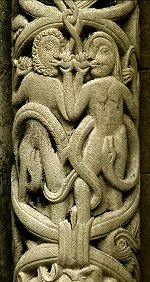


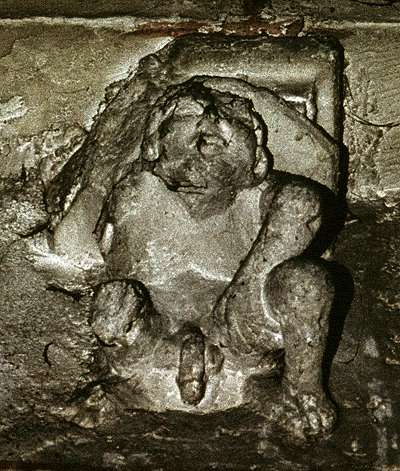
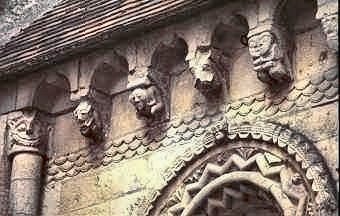
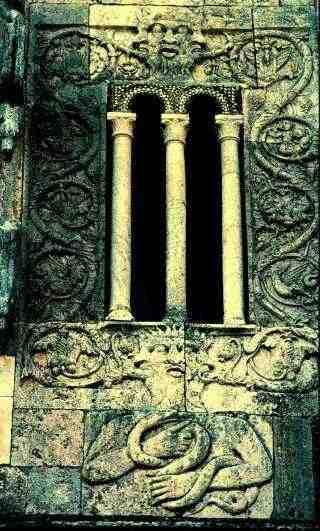
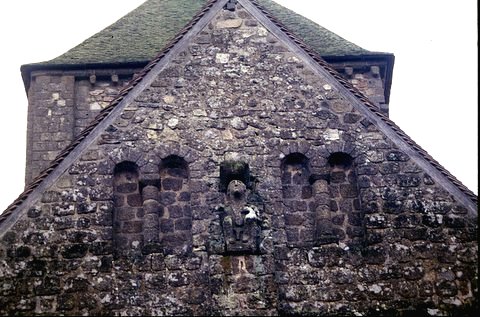
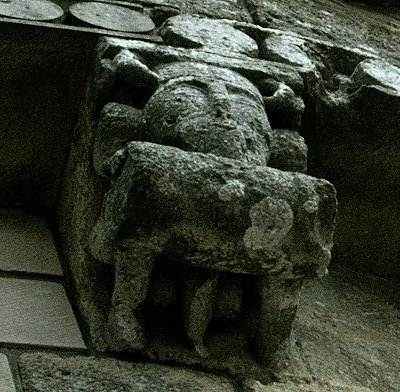
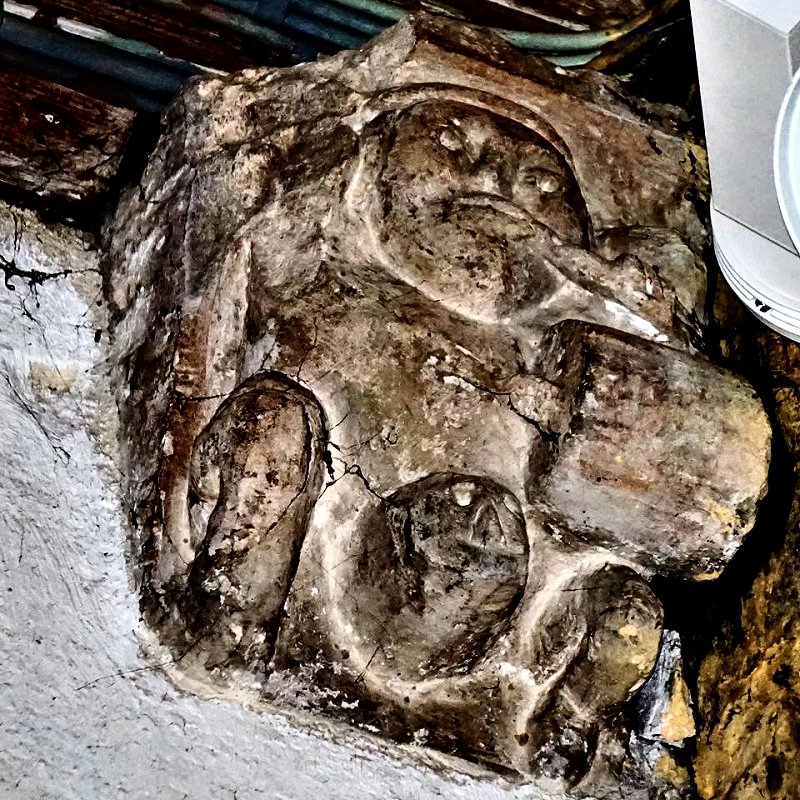
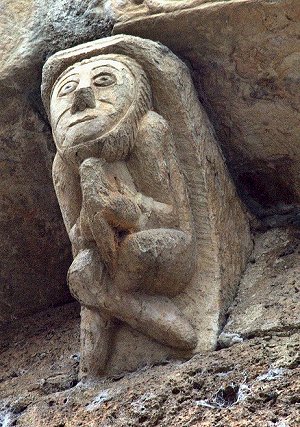
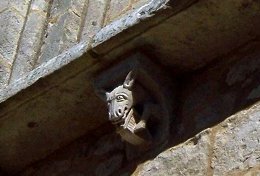
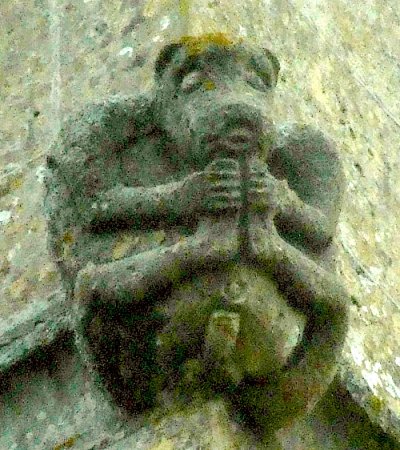
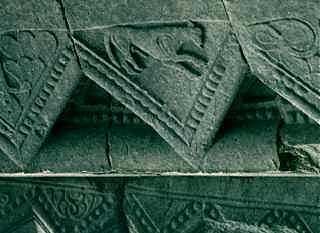 enlarge
enlarge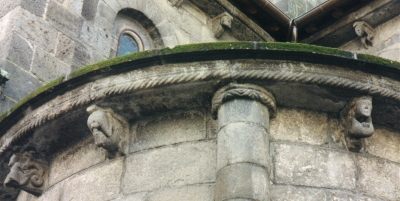
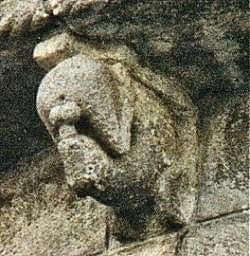
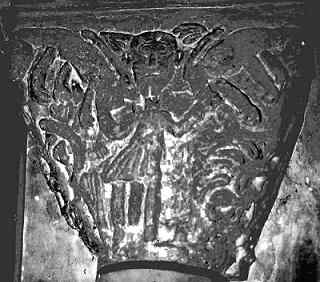
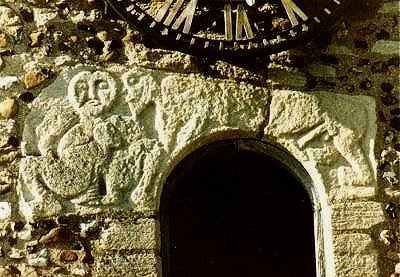
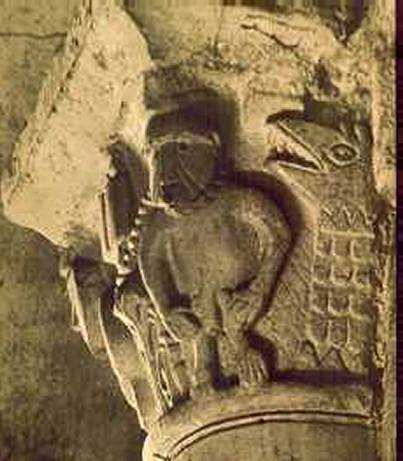 more apes
more apes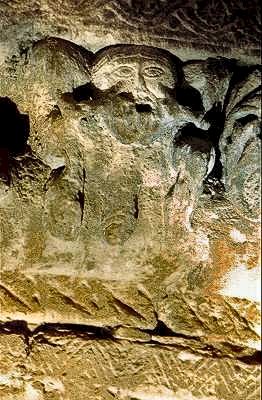
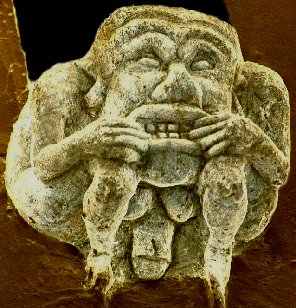
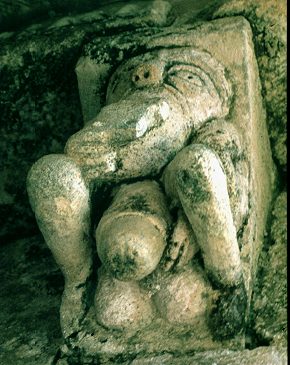
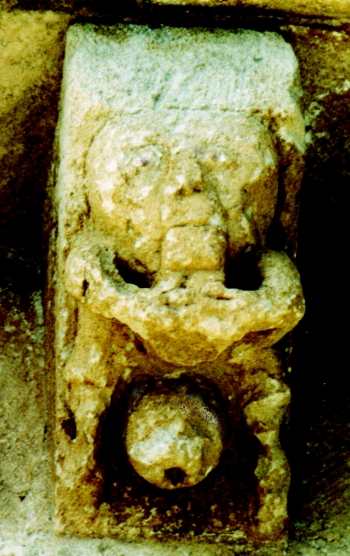 another view
another view 